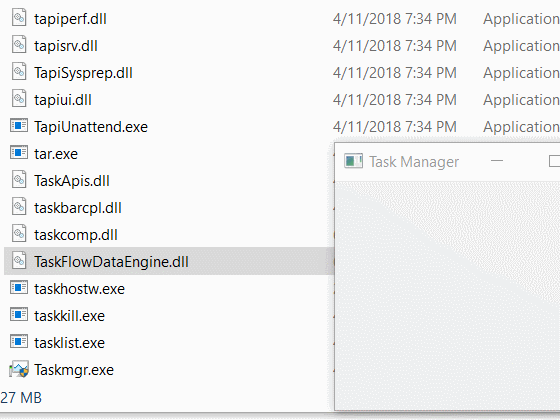Spoofing the Windows 10's Task Manager
Observant Windows 10 users will notice that some of the new metro apps can only run as a single instance. Examples include Settings and Task Manager. Attempting to open another instance of these processes will result in the already opened one being focused.
I focused on Task Manager. Initially, I began looking for calls to either mutexes or semaphores, which can (if a name argument is passed) be stored in the Windows’s object manager. Calls to create a mutex or semaphore with a name that already exists will return ERROR_ALREADY_EXISTS. In one such instance CreateMutexW used the wide string: Local\\TM.750ce7b0-e5fd-454f-9fad-2f66513dfa1bTerminal Having another process create a mutex with this same name will result in ERROR_ALREADY_EXISTS being returned whenever the second process calls CreateMutexW. The second process, in this case, would be Task Manager
This doesn’t successfully spoof Task Manager, however, as it has more startup checks. After receiving ERROR_ALREADY_EXISTS, Task Manager checks FindWindow for a class “Task Manager” In order to spoof this you need to call CreateWindowEx and pass lpClassName a string of: “TaskManagerWindow” and pass lpWindowName a string of: “Task Manager”
Finally, after Task Manager finds the duplicate Window, it will call SendMessageTimeoutW with msg parameter set to: 0x4D3. The result of SendMessageTimeoutW is then compared to 0x4D3.
In order for this compare to evaluate to true, you need to specify a place in your WNDPROC (From WNDCLASSEX in CreateWindowEx) for a call to ReplyMessage if wmsg, in your WNDPROC, is equal to 0x4D3. ReplyMessage needs to be called with the same 0x4D3. If Task Manager receives 0x4D3 as a reply, it will go down a series of procedures and terminate itself. Check out the Github PoC Code
